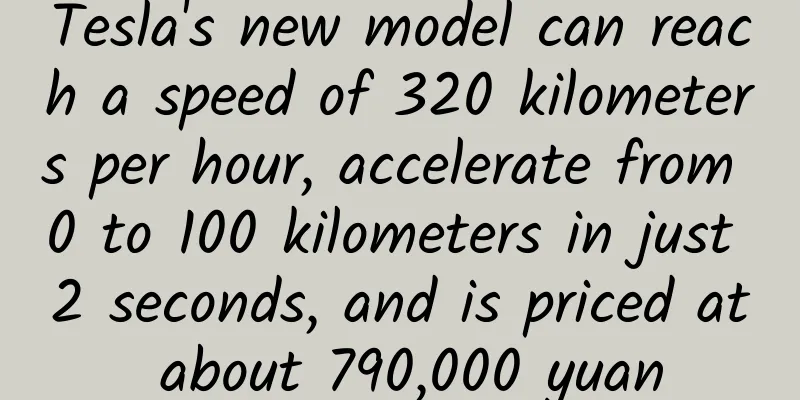China Automobile Dealers Association: New Energy Passenger Vehicle Points from January to November 2019

|
The overall range and new energy points performance of new energy vehicles in China have continued to improve in the past two years. According to estimates, the production of new energy passenger vehicles from January to November 2019 was 900,000 units, a 7% increase over the same period in 2018 , and the new energy points reached 3.85 million points, a 29% increase over the same period in 2018. From January to December 2018 , 1 million new energy passenger vehicles were produced , generating 3.61 million new energy points, an average of 3.6 points per passenger vehicle , an increase of 25% from 2.9 points in 2017 . In November 2019 , the average score of a single vehicle was 4.5 points, while the average score of a single new energy vehicle was 3.8 points in November 2018. The 19 % increase in November 2019 is also a very good result. The score of a single vehicle increased by 18% from January to November 2019 compared with January to November 2018 . Recently, joint venture brand new energy vehicles have achieved rapid growth. In November 2019 , the production of joint venture brand new energy vehicles reached 22,000 units, accounting for 30% of the market , an increase of 20 percentage points over the same period in 2018. The overall performance of new energy points of domestic brands is very good, and major new energy vehicle manufacturers such as BYD, SAIC, and BAIC New Energy have all performed very well. 1. Calculation of actual value of new energy credits We calculated the number of models and the corresponding mileage based on the certificates issued by the Ministry of Industry and Information Technology. Since there are basically no effective batch products of fuel cell passenger cars, the current products are still plug-in hybrid and pure electric, which are also easier to calculate. Judging from the number of plug-in hybrid products, most of them have a range of 50-80 kilometers, but the main models have already crossed the 80- kilometer threshold. Plug-in hybrids should all get 2 points, and this calculation is also based on two points. 2. Analysis of the proportion of new energy credits According to the early draft of the " double credit " policy, the proportion of new energy credits in China from 2018 to 2020 was 8% , 10% , and 12% respectively . After that, the industry was worried that it would not be possible to achieve the 8% credit ratio in 2018. After much negotiation, the official version of the " double credit " policy finally cancelled the 8% new energy credit ratio requirement in 2018. At present, the operation of the double credit is in good condition. In December 2018 , the new energy vehicle credits reached 32.6% , which was a strong performance. The sales volume in the auto market also accounted for 8.7% , becoming an important growth driver of the auto market. From January to November 2019 , the new energy vehicle credits reached 22% , which was a very good performance. In general, the proportion of new energy vehicle credits from January to December 2017 reached 6.8% , a significant increase from 4.1% in 2016. And because 2017 was a full year, it was characterized by low at the beginning and high at the end. For example, in December 2017 , it was 11.6% , which basically remained the same. From January to December 2018 , it was 16.5% , 9 percentage points higher than from January to December 2017. From January to November 2019 , the credit ratio was 22% , much higher than from January to November 2018. This is also because the production pressure of traditional vehicles is high and the sales of new energy vehicles have recovered at the end of the year, so the increase in 2019 appears to be greater . 3. Analysis of joint venture and independent new energy performance From January to November 2019 , the output of new energy vehicles of joint venture brands increased by nearly 147% year-on-year . In 2019 , new energy products of joint venture brands were gradually put in place, and the new energy output points increased rapidly, reflecting the accelerated growth trend of new energy of joint venture brands. In November 2019 , the output of new energy vehicles from joint ventures accounted for 24% , an increase of 11 percentage points over the same period in 2018. The output of new energy vehicles from domestic brands accounted for 76% , which was also a good performance. In 2019 , the share of new energy points from joint ventures was 16% , reflecting the slightly weaker effect of plug-in hybrid points. Domestic new energy points performed very well. 4. Analysis of enterprise new energy credit performance
|
<<: As the trend of paid video streaming emerges, are video sites ready to let users pay for it?
Recommend
A 10-year-old child was scalded while sleeping with a hot water bottle! Keep this winter heating guide →
Cold weather Everyone performed "fancy ways ...
How to improve user activity and retention of B-side products? Remember these 5 points
C-end products are still different from B-end pro...
This article explains Snapchat's social product success methodology from three perspectives: efficiency, media, and dimension.
Snapchat is finally going public. The company has...
Tieling SEO Training: Reasons why rankings are still high even if the content is not updated
Most of the work done by search engine optimizati...
6 steps to promote products on Xiaohongshu!
With over 100 million monthly active users and 10...
Birds are "master ventriloquists" who can even imitate the sounds of other animals
Produced by: Science Popularization China Author:...
Annual salaries of car company executives revealed, even 30 million can’t make it into the top five, so state-owned enterprises can’t beat private enterprises?
Recently, the salary dispute among senior executi...
Kuaibo Congliang: Why "after getting rich, people forget their fellow villagers"
Some things cannot be prohibited, such as eating,...
Fake traffic? How to be careful when placing advertisements?
Fake traffic is already a well-known problem in t...
"Sky City" on the Qinghai-Tibet Plateau
Loading long image... Source: China Tibet Net, So...
Toutiao 2019-2020 Marketing Plan
About the marketing plan of Toutiao platform Tout...
Can't you supplement calcium by sunbathing through glass?
Since childhood, we have often seen calcium suppl...
IHS: Demand for new display materials surges in the second half of 2015
According to IHS research, as LG Display increase...
McDonald's launches sky-high priced takeout boxes, a brand marketing trick?
From the bizarre cross-border phenomenon of big b...
Android 13 will use the read-only file system developed by Huawei by default
According to a recent report by Esper, the latest...









